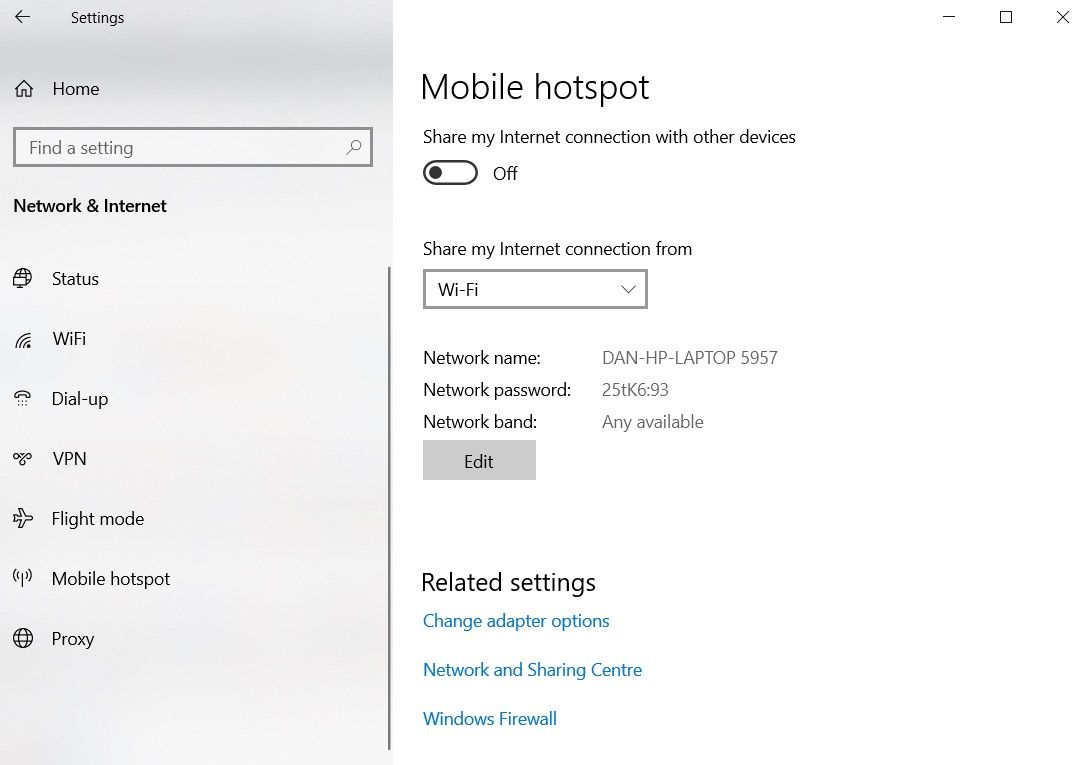How To Get Internet Without Cell Service
Getting on the web is expensive. In the U.s.a., the average cost of a abode net connection is $60 per month. Don't fancy paying all that money? Don't worry; fifty-fifty if you lot don't have a regular Internet access provider, there are still ways to go online.
Here are some ways to get Wi-Fi without an Internet Service Provider.
1. Mobile Hotspot
The best way to brand sure yous accept the internet on your laptop at all times is to use a mobile hotspot.
Of course, there is an upfront cost of doing so—you volition need to buy a hotspot device and subscribe to a mobile internet plan. Quite a few companies offer mobile hotspots.
There are three mobile hotspot models nosotros specially recommend:
Verizon Jetpack MiFi 8800L
Despite being a couple of years old, the Verizon Jetpack MiFi 8800L is probably nonetheless the best 4G hotspot available correct now. It uses Qualcomm'south X20 modem and supports xi LTE bands. It provides both 2.four and 5GHz mobile networks, supports guest connections, and allows you to connect up to 15 devices to the network at once.
The device is merely bachelor through Verizon. You lot tin can get the device for $99 if you lot sign up for a two-year mobile internet contract. Information technology is $199 if y'all buy the device contract-free.
HTC 5G Hub
The HTC 5G Hub is the best 5G mobile hotspot on the market.
The device has a Qualcomm Snapdragon 855 CPU, a Snapdragon X50 5G modem, 4GB of RAM, support for Bluetooth and Ethernet connections, all-twenty-four hour period battery life, and the ability to connect up to xx devices at the same time. It runs Android.
On the downside, 5G is still not bachelor everywhere. If you're looking for a hotspot that will work when you're off the beaten path, the HTC 5G Hub might not exist for you.
GlocalMe DuoTurbo
If you need temporary Wi-Fi while traveling outside of the United States, you demand a mobile hotspot and internet programme that both work internationally.
We like the GlocalMe DuoTurbo. Information technology works in more than than 140 countries, covers 270+ local operators, and has prices starting at $9/day for data. Device rental options are also available.
Of course, at those prices, it is not a suitable domestic option. Only if you're on vacation and demand to stay connected to habitation, information technology remains cheaper than using roaming net on your smartphone.
2. Tether Your Smartphone or Tablet
If you don't demand regular mobile information and instead just need occasional access to the internet on your laptop, the fastest and easiest way to get online is often to tether your smartphone.
Tethering your smartphone or tablet does take ii drawbacks.
- You're entirely dependent on the signal of your mobile telephone carrier. That's fine if you lot're in a city but less reliable if you're out in the country.
- Laptops typically apply much more data than smartphones, meaning you could be in for a nasty surprise when your adjacent telephone neb lands in your mailbox.
If you take an Android device, y'all can enable tethering by heading to Settings > Network and Internet > Hotspot and Tethering > Wi-Fi Hotspot, then slide the toggle side by side to Wi-Fi Hotspot into the On position.
iOS users need to go to Settings > Personal Hotspot and slide the toggle.
On both Android and iOS, yous should set a new username and password to protect the security of your hotspot.
3. Find Public Wi-Fi
Depending on where you find yourself when you need to get internet without a provider, y'all might be able to leap on a nearby public Wi-Fi network. For example, libraries, coffee shops, restaurants, and transport hubs often accept networks you can join.
You can find nearby gratuitous Wi-Fi using apps like Wi-Fi Master Key on Android and Wi-Fi Finder on iOS.
Note: If you lot decide to join a public Wi-Fi network, brand sure you take steps to ensure your security and privacy are both safe. If you lot would similar to learn more, check out our commodity on how to spot fake public Wi-Fi run by hackers.
Download: Wi-Fi Primary Key for Android (Gratis)
Download: Wi-Fi Finder for iOS (Free)
4. Wi-Fi USB Dongle
A Wi-Fi USB dongle, a.k.a., an "internet stick," is a cheaper and more than accessible version of a mobile hotspot and temporary Wi-Fi. Instead of committing to an expensive long-term mobile cyberspace plan, you lot can insert a standard 3G or 4G SIM card and use its data connection.
Considering internet sticks for laptops are lighter and smaller than mobile hotspots, they are amend suited for people who demand a web connection while traveling. On the downside, don't await signal strength, Wi-Fi speed, or range to be as good as using a hotspot device.
To acquire more, check out our piece on the all-time Wi-Fi USB adaptors.

There'southward a gamble that someone else in your party might have an internet connection on their machine. For example, perhaps they have login credentials for a nearby individual network, and you do not.
In those cases, yous can share the bandwidth with a Windows or macOS machine.
To share an cyberspace connectedness from a Windows computer, go to Settings > Network and Internet > Mobile Hotspot. Choose the connectedness yous want to share and slide the toggle into the On position.
If you demand to share an net connection from a macOS device, go to Apple > System Preferences > Sharing > Cyberspace Sharing. Choose the connection you want to share in the Share your connection from the driblet-downwardly card, and then select how yous desire to share the internet from the list of options underneath.
Sympathize Your State of affairs Earlier Choosing an Option
The best way to get Wi-Fi without an internet connection depends on where yous are and how you want to use the connectedness.
People who practise a lot of work on the go should consider a fully-fledged mobile hotspot. Occasional casual users might want to use tethering or buy an internet stick. In rural areas, you can get online through wireless internet.
Virtually The Author
How To Get Internet Without Cell Service,
Source: https://www.makeuseof.com/tag/how-to-get-wifi-without-internet/
Posted by: owensvibody.blogspot.com



0 Response to "How To Get Internet Without Cell Service"
Post a Comment